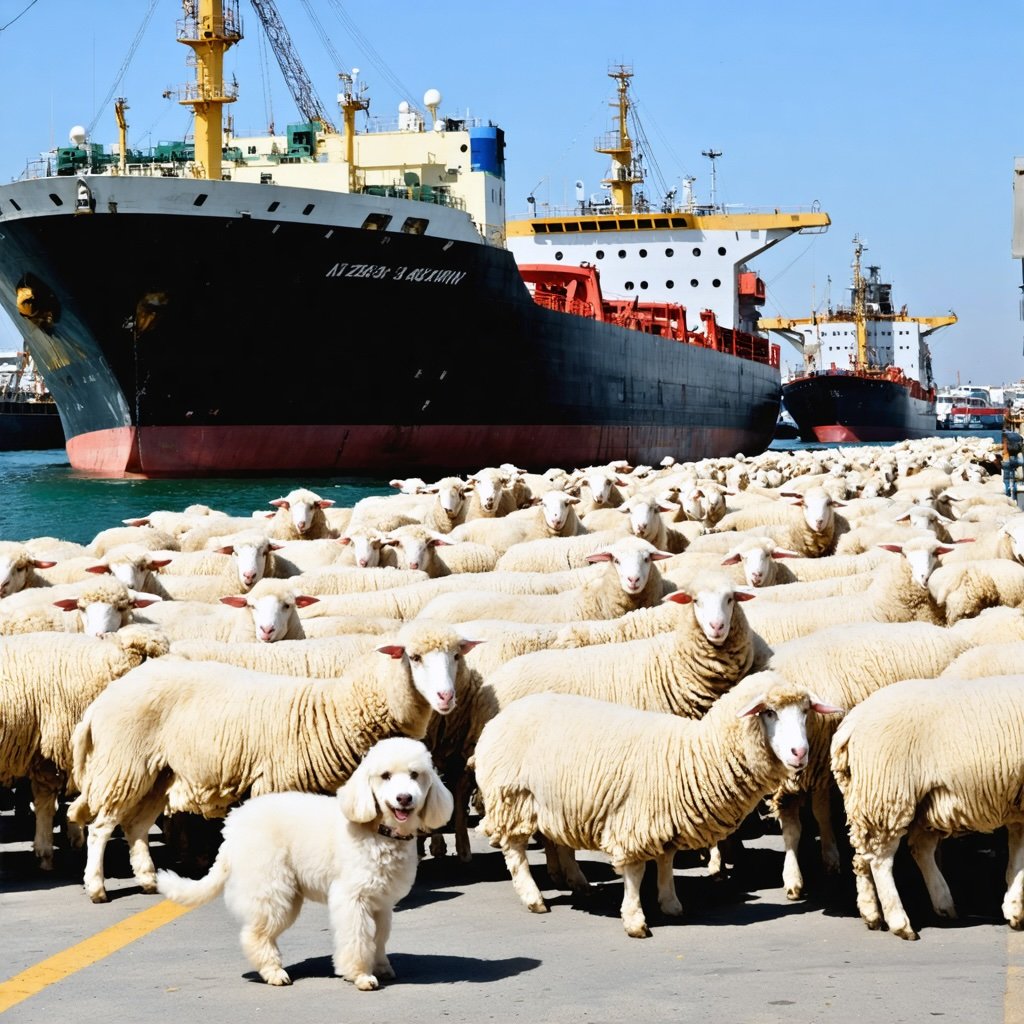FLOSSI IS SHEEP SHAPE
Algeria's president has announced plans to import a staggering 1 million sheep ahead of this year's Eid al-Adha, the holiday Muslims worldwide purchase livestock for sacrifice.
North Africa is enduring its seventh consecutive year of extreme heat and below-average rainfall. The record drought has shrunk harvests and driven up the price of animal feed needed to raise livestock, including in the northern Algerian highlands, where breeders raise sheep revered by the population for their quality.
The number of sheep consumed during Eid al-Adha varies each year based on global Muslim populations, economic factors, and livestock availability. However, estimates suggest that:
Tens of millions of sheep (along with other livestock such as cows, goats, and camels) are sacrificed during the festival worldwide.
In 2023, around 10 million sheep were sacrificed in Algeria alone.
In Pakistan, over 8 million animals (including sheep, cows, and goats) are typically sacrificed.
In Turkey, over 3 million animals are sacrificed.
In Saudi Arabia, where many pilgrims perform Hajj, around 1-2 million animals are sacrificed annually.
It is difficult to determine the exact number of sheep sacrificed globally during Eid al-Adha. Still, estimates suggest well over 100 million animals, with sheep accounting for a significant portion.
The purpose of Eid al-Adha, also known as the "Festival of Sacrifice," is to commemorate the Prophet Ibrahim’s (Abraham's) willingness to sacrifice his son as an act of obedience to God. According to Islamic tradition, at the last moment, God provided a ram to be sacrificed instead, symbolizing divine mercy and faith.
Key Purposes of the Sacrifice:
Obedience to God – The sacrifice is an act of faith, following Prophet Ibrahim’s example of devotion.
Charity and Sharing – The meat from the sacrificed animal (sheep, goat, cow, or camel) is divided into three parts:
One-third for the family.
One-third for relatives and friends.
One-third for the poor and needy.
Eid al-Adha dates back to Prophet Ibrahim (Abraham), a central figure in Islam, Judaism, and Christianity. The tradition is rooted in the story found in the Quran (Surah As-Saffat 37:102-107), where God commands Ibrahim to sacrifice his son as a test of faith. When Ibrahim was about to comply, God replaced the son with a ram, signifying divine mercy.
Sacrificing an animal to commemorate this event was established as an Islamic tradition by Prophet Muhammad in the 7th century CE. After the Hijra (migration) to Medina, it became an official Islamic holiday, and its observance has continued annually.
Eid al-Adha is celebrated on the 10th day of Dhu al-Hijjah, the 12th and final month of the Islamic lunar calendar. The exact Gregorian calendar date varies each year because the Islamic calendar is based on the lunar cycle (which is about 10–12 days shorter than the solar year).
In 2025, it is expected to be on June 6.
Since it follows the lunar cycle, the date shifts approximately 10–12 days earlier each year. The festival lasts four days, starting with the sacrifice on the first day and continuing with prayers, feasting, and charity.





